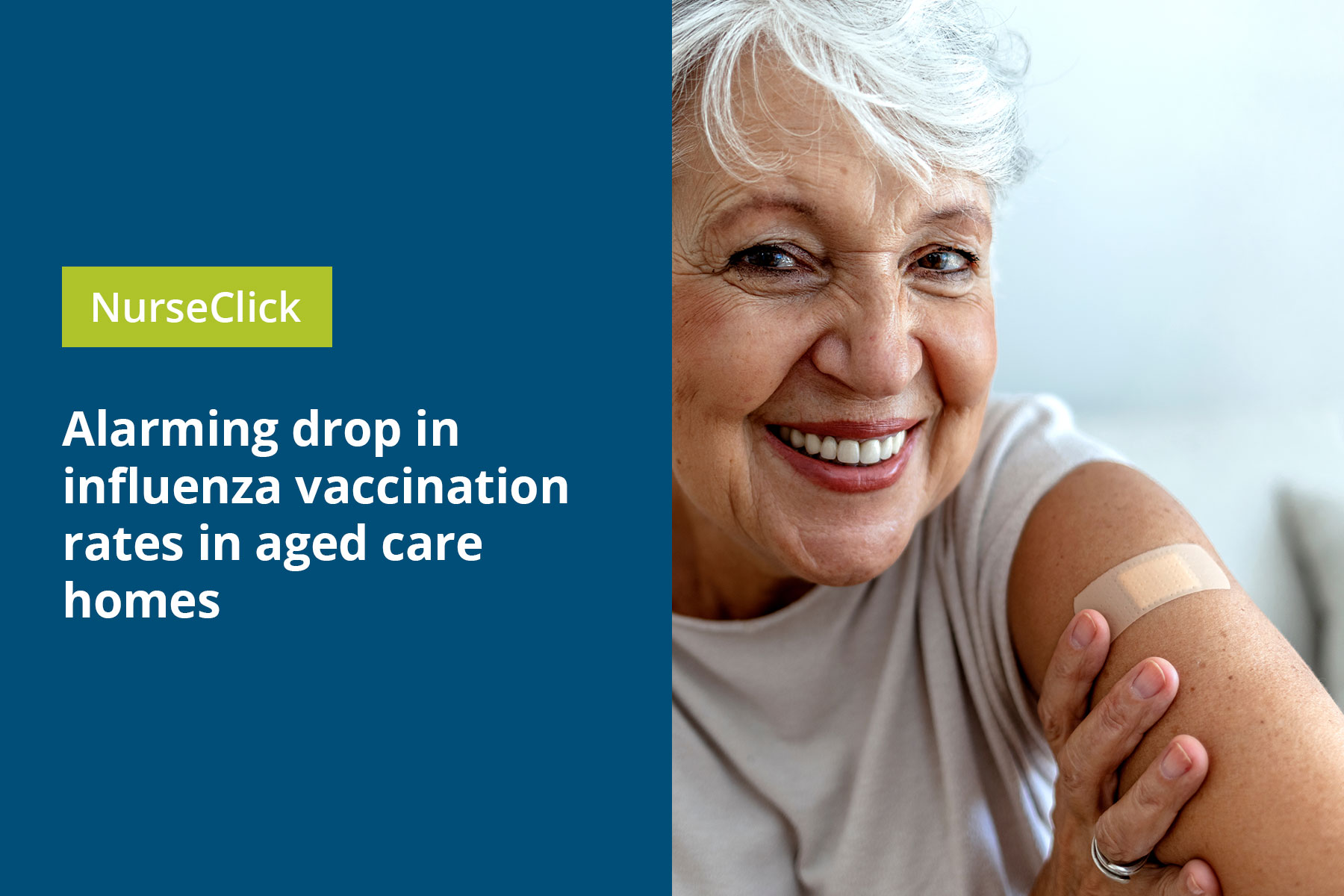According to the National Centre for Immunisation Research and Surveillance (NCIRS), influenza vaccination rates are at their lowest in four years. Notably, there has been a significant drop of 14.4% in vaccinations among older adults aged 65 years and over. Nationwide, the decrease across all age groups is 12.2% compared to last year (NCIRS, 2024).
The Aged Care Quality and Safety Commission is on high alert following recent statistics, which reveal that some residential aged care facilities (RACFs) have less than 10% of their residents vaccinated against influenza (Australian Government, 2024). This situation violates various aged care standards that emphasise the importance of providing optimal clinical care to residents. Additionally, there are concerns that these alarming statistics may lead to an increase in influenza-associated deaths this year (Heaney, 2024).
During the recent COVID-19 pandemic, some RACFs struggled to vaccinate their residents due to limited services available on-site. To increase vaccination rates in RACFs, potential solutions include running vaccination clinics on-site and authorising registered nurses working in aged care to administer vaccines.
Providing immunisation services to older Australians will help improve vaccination uptake. However, public health campaigns also play a crucial role. Many people need regular reminders about preventative measures. Unfortunately, state government campaigns have decreased over the last decade, which may have contributed to the drop in immunisation rates (Heaney, 2024).
What is influenza (flu)?
Influenza, commonly known as the flu, is a contagious respiratory illness caused by influenza viruses. These viruses are categorised into three main types: A, B, and C. Influenza A and B viruses are responsible for seasonal flu epidemics and can cause mild to severe illness, sometimes leading to hospitalisation or even death. Typical symptoms include fever, cough, sore throat, runny or stuffy nose, body aches, headache, chills, and fatigue. Influenza viruses spread mainly through droplets when infected people cough, sneeze, or talk. The best way to prevent influenza is by getting vaccinated each year (Australian Immunisation Handbook, 2024).
Each year, the World Health Organization and other health authorities monitor influenza activity worldwide and recommend the composition of influenza vaccines to include the strains most likely to cause illness during the upcoming flu season. These recommendations are based on surveillance data and predictions about which influenza viruses are most likely to circulate (NCIRS, 2024).
Why is the influenza vaccine so important for consumers in our RACFs?
In 2019, Australia experienced its worst influenza season on record, with multiple outbreaks in RACFs and higher than usual mortality rates among the elderly. Outbreaks in RACFs are common and difficult to manage due to the close living quarters and the assistance residents receive from numerous care staff (Barr, 2019).
Under the National Immunisation Schedule, people aged 65 years and above can receive the influenza vaccine for free. After observing increased mortality rates and low vaccine effectiveness in older Australians, the Australian government introduced two new, higher-potency vaccines: Fluad Quad and Fluzone High Dose Quad. These adjuvanted vaccines are preferred over the standard influenza vaccine to prevent influenza-related morbidity and mortality in the elderly, who are considered the most vulnerable risk group (Australian Technical Advisory Group on Immunisation, 2024).
Staff working in RACFs are at a higher risk of infection and exposure during influenza outbreaks. Consequently, the federal government has made it compulsory for RACFs to offer influenza vaccines to staff. Aged care providers are required to submit an annual report on the influenza vaccination rates for staff and residents.
Nurses play a crucial role in meeting immunisation demands and can facilitate vaccination efforts within RACFs. Their expertise and close interaction with residents position them perfectly to administer vaccines and promote public health. The Australian College of Nursing (ACN) supports this vital role by offering a suite of specialised courses designed to upskill nurses to become immunisers. One such course is the 346 Immunisation for Registered Nurses Single Unit of Study, which provides comprehensive training in immunisation. Additionally, ACN offers Continuing Professional Development (CPD) courses such as Immunisation in Aged Care Settings and Cold Chain Management, Managing Influenza Vaccines in Residential Care Settings, and Influenza 2024. These programs ensure that nurses are equipped with the latest insights and best practices in immunisation, enabling them to provide the highest standard of care and protect our most vulnerable populations.
Author: Thuy-An Le
An coordinates the Aged Care Transition to Practice Program as well as ACN’s National Immunisation Program. An is passionate about improving the quality of care older people receive in RACFs. An has significant experience in geriatric care and clinical teaching; she believes that all nurses in the aged care sector should have up-to-date and evidence-based knowledge and skills to provide optimal consumer care.

References
Australian Technical Advisory Group on Immunisation (ATAGI). Australian Immunisation Handbook, Australian Government Department of Health and Aged Care, Canberra, 2022, immunisationhandbook.health.gov.au.
Australian Technical Advisory Group on Immunisation (ATAGI). Statement on the administration of seasonal influenza vaccines in 2024, Australian Government Department of Health and Aged Care, Canberra, 2024, https://www.health.gov.au/resources/publications/atagi-statement-on-the-administration-of-seasonal-influenza-vaccines-in-2024?language=en
Barr, I., 2020. Review of the 2019 influenza season in Australia and what to expect in 2020. Immunisation Coalition. https://www.immunisationcoalition.org.au/wp-content/uploads/2020/02/1-Barr-ASM-2020-presentation.pdf
Heaney, C., 2024. ‘Alarming’: Flu vaccination rates fall over 12%. The Royal Australian College of General Practitioners (RACGP). https://www1.racgp.org.au/newsgp/clinical/alarming-flu-vaccination-rates-fall-over-12
The National Centre for Immunisation Research and Surveillance (NCIRS), 2024. Influenza vaccination cumulation % coverage by age group – all people. https://ncirs.org.au/influenza-vaccination-coverage-data/all-people-2020-2024-ytd





